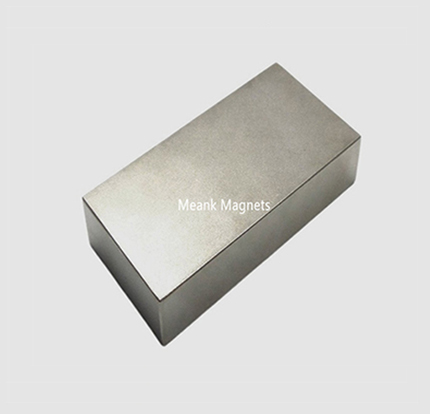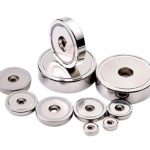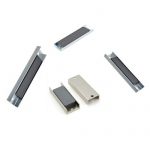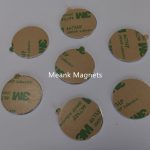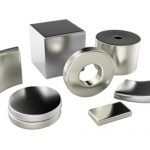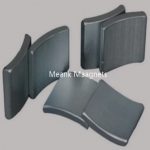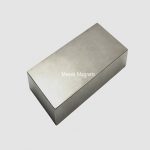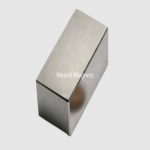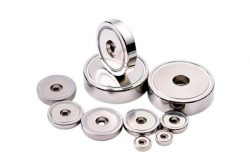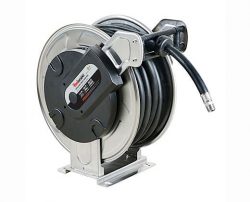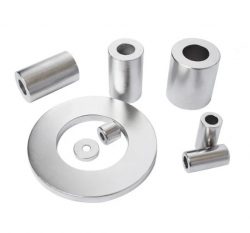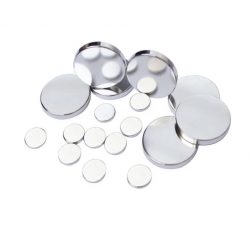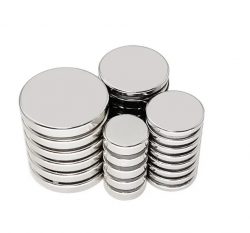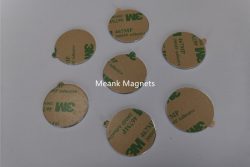Safety neodymium magnets
Safety is important for you and us. Please read carefully the following safety information before operating neodymium magnets. And also share the safety tips with your employees, customers and other people who will contact neodymium magnets. The neodymium magnets safety tips are also suitable for SmCo magnets and ferrite magnets.
Swallowing
Small magnets could be swallowed by children.
Magnets are not toys! If several magnets are swallowed, they could get stuck in the intestine and cause perilous complications. Make sure that children don’t play with magnets.
Electrical conductivity
Magnets are made of metal and conduct electricity.
Magnets are not toys! Make sure that children don’t play with magnets. Children might try to put magnets into a power outlet and thereby suffer from an electric shock.
Contusions
Big magnets have a very strong attractive force.
· Unsafe handling could cause jamming of fingers or skin in between big neodymium magnets. This may lead to contusions and bruises.
· Powerful, very large neodymium magnets could cause bone fractures. Wear heavy protective gloves when handling larger neodymium magnets.
Pacemaker
The functioning of pacemakers and implanted heart defibrillators could be affected by neodymium magnets
· A pacemaker could switch into test mode and cause illness.
· A heart defibrillator may stop working.
· If you wear these devices keep sufficient distance to neodymium strong magnets.
· Warn others who wear these devices from getting too close to strong neodymium magnets.
Heavy objects
Too heavy loads, symptoms of fatigue as well as material defect could cause a magnet or magnetic hook to loosen from the surface where it was attached to.
Falling objects could lead to serious injuries.
· The indicated holding force of a magnet applies only to ideal conditions. Allow for a high safety cushion.
· Don’t use magnets in the places where people could sustain injuries in case of material failure.
Metal splinters
Rare earth magnets are brittle. Colliding rare earth magnets could crack.
Sharp splinters could be catapulted away for several meters and injure your eyes.
· Avoid the collision of rare earth neodymium & SmCo magnets.
· Wear safety glasses when handling larger rare earth magnets.
· Make sure that nearby people are also protected or keep their distance.
Magnetic field
Magnets produce a far-reaching, strong magnetic field. They could damage TVs and laptops, computer hard drives, credit and ATM cards, data storage media, mechanical watches, hearing aids and speakers.
· The devices and objects that could be damaged by strong magnetic fields should be kept away from magnets
Combustibility
When machining rare earth magnets, the drilling dust could easily ignite.
Stay away from machining magnets or use appropriate tools and sufficient cooling water.
Nickel allergy
Most of the neodymium magnets contain nickel, even those without nickel coating.
· Some people have an allergic reaction when they come into contact with nickel.
· Nickel allergies could develop from perpetual contact with nickel-plated objects.
· Avoid perpetual skin contact with nickel coated neodymium magnets.
· Avoid contact with nickel coated magnets if you already have a nickel allergy.
Airfreight
Magnetic fields of improperly packaged magnets could influence airplane navigation devices.
In the worst case it could lead to an accident.
· Airfreight magnets only in packaging with sufficient magnetic shielding.
· Please refer to the respective regulations for shipping magnets by air
Postage
Magnetic fields of improperly packaged magnets could cause disturbances in sorting machines and damage fragile goods in other packages.
· Please refer to our shipping tips.
· Use a large box and place the magnet in the middle surrounded by lots of padding material.
· Arrange magnets in a package in a way that the magnetic fields neutralise each other.
· If necessary, use iron sheets to shield the magnetic field.
· There are stricter rules for airfreight: Refer to the neodymium magnet warning notice “Airfreight”.
Influence on people
According to the current level of knowledge, magnetic fields of permanent magnets do not have a measurable positive or negative influence on people. It is unlikely that permanent magnets constitute a health risk, but it cannot be ruled out entirely.
· For your own safety, avoid constant contact with strong magnets.
· Store large magnets at least one metre away from your body.
Oxidation, corrosion, rust
neodymium magnets without coating oxidize quickly and disintegrate.
Most of rare earth neodymium magnets have a nickel-copper-nickel coating to protect them from corrosion. This coating provides some protection against corrosion, but it is not robust enough for continuous outdoor use.
· Use magnets only in the dry indoors or protect them against environmental influences.
· Avoid damages to the coating of neodymium magnets.
Temperature resistance
Rare earth neodymium magnets have a maximum working temperature of 80 to 200°C.
Most neodymium magnets lose part of their adhesive force permanently at a temperature of 80°C.
· Don’t use neodymium magnets in places where they are exposed to extreme heat.
· If you use an adhesive, don’t harden it with hot air.
Mechanical treatment
Neodymium magnets are brittle, heat-sensitive and oxidize easily.
· When drilling or sawing a neodymium magnet with improper tools, the magnet may break.
· The emerging heat may demagnetize the neodymium magnets.
· The neodymium magnet will oxidize and disintegrate due to the damaged coating.
Avoid machining neodymium magnets if you do not have the necessary machines and experience. Let us provide you with an offer for a custom-made neodymium magnets instead.
